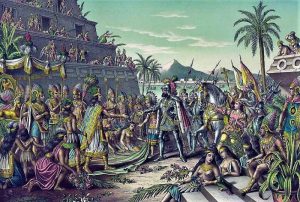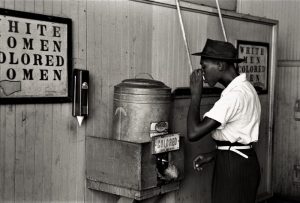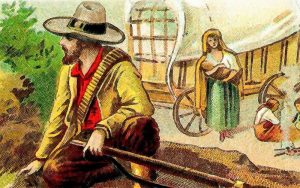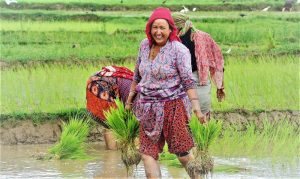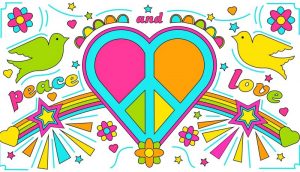Transculturation
When a community receives and acquires cultural forms belonging to another culture, and then assimilates and integrates them into its culture, leaving aside its own cultural practices, what is known as transculturation occurs. This concept was developed by the Cuban anthropologist and ethnologist Fernando Ortiz Fernández (1881-1969) to designate the process of transformation of two groups when they come into contact. This process may refer to the relations between a regional community and a national community, between a marginalized community and a dominant one, a minority one and a majority one.
What is transculturation?
Transculturation refers to a process through which a social group progressively adopts and appropriates the cultural practices of another social group. This process can take place with consent, as in the case of immigration to another country or by imposition or force, as in the case of colonial, for example, in periods of war or conflict.
It is important to note that although transculturation has often taken place in conflict contexts, it does not always imply conflict. It can also be a phenomenon of cultural enrichment.
Characteristics of transculturation
- This process takes place through the contact of two different cultures.
- In today’s age, transculturation takes place as a consequence of immigration waves and globalization phenomenon. In the past, the process of transculturation took place mainly in the period of colonization.
- This process can be direct or indirect, with the consent of the community adopting the new culture or it can be imposed.
- It is a gradual process. In a low degree of transculturation, one’s own culture or some major aspects of it are preserved while some aspects of the dominant group’s culture are assumed as a natural response of adaptation or survival. In a high degree of transculturation, there is a radical process through which external cultural identity is assimilated to a point where one’s own culture disappears.
History
The concept of transculturation was first used by Cuban anthropologist and ethnologist Fernando Ortiz in 1940 in his work Contrapunteo of tobacco and sugar. The scholar uses the concept to contrast it with the Anglo-Saxon term acculturation and point out that in addition to contact with a new culture, transculturation leads to the loss of one’s own culture.
Although Ortiz privileges in his transculturation approach, in the elements of the white (European) and black (African) cultures that coexist in the Cuban population, the author also alludes the immigrants of Asian and Mexican origin who lived in Cuba during this period. Indeed, Ortiz uses the term based on his perceptions of Cuban society as a mixture of European, African, Chinese and indigenous forms. Likewise, from his perspective, the term encloses relations of conflict between oppressors and oppressed.
Later, it was used by the Venezuelan writer Mariano Picón Salas in 1965, from a more historicist point of view.
Later on, the Uruguayan critic Ángel Rama takes up the concept again in 1982, to explain the way in which Latin American authors incorporate in their work different elements coming from popular, rural and indigenous cultures. Rama shows how these authors mix these elements with literary techniques from the European and American avant-garde.
Transculturation process
Transculturation is the process of transformation that an individual undergoes after adopting a new culture. Although transculturation can take place without conflict, the process usually highlights some confrontations because the receiving culture suffers the imposition of some foreign cultural values.
Anthropologist Fernando Ortiz explains the process of transculturation by explaining the relations between white Europeans and black slaves in Cuba during the period of colonization. In the initial phase of the transculturation process, the oppressed group is subordinated by the oppressor group, will behave in a hostile manner and will try to rebel against it. However, in the next phase, the oppressed group will make changes in its behavior to avoid the negative consequences of resisting the subordination of the oppressor group. Then, the group subjected to the impositions of the oppressor group accepts and imitates the cultural forms of the oppressor group.
It should be noted that colonization is not the only context in which the process of transculturation can take place. This may occur in various situations in which cultural learning is imposed or welcomed by individuals who acquire a new culture and abandon their own.
Examples of transculturation
Colonization
A good example of transculturation is colonialism. When the Europeans colonized the American continent, they brought to these lands values and traditions typical of European culture. Nowadays, many countries of this continent speak Spanish due to the Spanish colonial conquest and in the same way, because of this influence, in many of them, the Catholic religion is professed.
Chile
The process of transculturation in Chile begins with the arrival of the Spaniards in this country. In the first place, during the colonial period and in the second place, during the immigration period. The contact of these two communities (Spaniards and Chileans) implied a process of adaptation for both. The Spanish-aboriginal transculturation had such a high degree that even today, Chileans express cultural values of more Spanish influence than aboriginal. It could even be said that the contributions of aboriginal culture in the Chilean people have practically disappeared.
Colombia
An example of transculturation in Colombia can be seen in the evolution of the traditional music of Popayán, capital of Cauca. Before the Spanish conquest, in this city lived different indigenous groups that later with the colonization, were exposed to the oppression of the conquerors. Of course, one of the most predominant features of Spanish culture is the Catholic religion and the presence of the Franciscans. Today, one of the traditions of this region is religious music.
Venezuela
Venezuela is a country with a history in which three different cultures converge, including the indigenous, African and Spanish cultures. As in other Latin American countries, in the colonial era with the arrival of the Spanish and the African slaves, a strong process of transculturation took place. Today, the features of indigenous culture are limited to the use of some words and gastronomy, while the African influence is evidenced above all in cultural forms such as music; the drum is a good example of this. The culture that had the greatest influence was the Spanish and this is evidenced in current cultural values such as, for example, the Catholic religion and language. Later, Venezuela saw its culture enriched with the contribution of other cultures in the nineteenth century, such as the French. Not to mention the different communities of Spanish, Italian and Portuguese origin, which immigrated to the Venezuelan territory known at the time for its oil boom.
How to cite this article?
Briceño V., Gabriela. (2019). Transculturation. Recovered on 3 January, 2025, de Euston96: https://www.euston96.com/en/transculturation/
